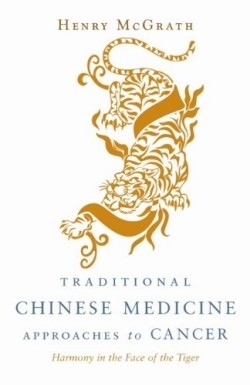Traditional Chinese Medicine Approaches to Cancer
- 2009 INDIES Finalist
- Finalist, Health (Adult Nonfiction)
Walking away from a Beijing hospital pharmacy, a middle-aged woman carried ten bulky bags, stuffed with the herbs she would give to her mother for her joint pains over the next ten days. During an interview with American students on a chilly morning in 2008, she went over the costs: the equivalent of a US dollar for a consultation with the hospital clinician and ten dollars for the herbs. She did not factor in the time needed to prepare the herbal decoction (the traditional method is to boil the raw herbs in a pot of water for about 20 minutes). Had she opted for allopathic medicine, the daily quota of pills would have set her back only a few cents.
Often, traditional Chinese medicine is neither cheap nor quick. But it is popular in China and in many other countries. Acupuncture, which was once viewed with suspicion in the United States, gained acceptance after James Reston, a New York Times reporter, wrote about his experience with “needle and herbal medicine.” During a 1971 visit to Beijing, he suffered acute appendicitis, was admitted to the Anti-Imperialist Hospital, and was in great discomfort the second night after an appendectomy. Li Chang-yuan, the hospital acupuncturist, inserted three long, thin needles into carefully selected points near his elbows and knees and within an hour Reston experienced relief. The Times featured his story on the front page.
Acupuncture is no longer an exotic procedure in the United States—extrapolating from interviews with 23,393 Americans in 2007, the National Center for Complementary and Alternative Medicine estimated that 3.1 million US adults used it in the previous year.
In Traditional Chinese Medicine Approaches to Cancer, Henry McGrath, a United Kingdom-based practitioner of oriental medicine, describes the use of acupuncture, herbal medicine, and Qi Gong in cancer care, and emphasizes how these methods can support allopathic treatment. He lists specific remedies, gives advice on finding qualified therapists, and summarizes the philosophical underpinnings of Chinese medicine, which “sees the human person in relation to her surroundings…as part of a social network, and as part of mankind.”
The book offers patients and care providers a holistic approach to regaining health and building resilience. “When one has a serious illness such as cancer, one must examine all aspects of one’s life in order to get well,” McGrath counsels. “In the search for health and wholeness, no stone should be left unturned.”
Review Date: December 2009.
Disclosure: This article is not an endorsement, but a review. The publisher of this book provided free copies of the book and paid a small fee to have their book reviewed by a professional reviewer. Foreword Reviews and Clarion Reviews make no guarantee that the publisher will receive a positive review. Foreword Magazine, Inc. is disclosing this in accordance with the Federal Trade Commission’s 16 CFR, Part 255.

